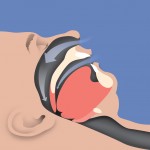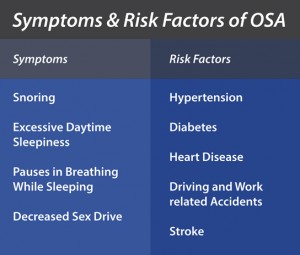Treatment for sleep apnea
What is Obstructive Sleep Apnea (OSA)?
Obstructive sleep apnea (OSA) is a potentially serious sleep disorder in which breathing repeatedly stops and starts during sleep. Obstructive sleep apnea (OSA) is a serious and lifelong medical condition that affects between 18 and 30 million adults over 18 in the US¹; with approximately 90% of them undiagnosed. OSA is a chronic, lifelong medical condition that can affect your sleep, health and quality of life. It has been linked to hypertension, diabetes, heart disease, work and driving related accidents and stroke.
It can have a significant impact on quality of life, placing unnecessary strain on relationships between bed partners, family and in the workplace.

What Causes OSA?
During sleep, muscles relax, including those that control the tongue and throat. Snoring is often a symptom of OSA caused by changes in your upper airway while you sleep. Your soft tissue may vibrate (commonly known as snoring) or it may completely collapse causing you to stop breathing. The soft tissue at the back of throat can sag, narrowing and constricting the airway. Collapsing of the soft tissue is called an Obstructive Apnea and may last for 10 seconds or more.

Symptoms and Risk Factors of OSA
One of the most common signs and symptoms of obstructive sleep apnea (OSA) is loud and chronic (ongoing) snoring. Pauses may occur in the snoring. Choking or gasping may follow the pauses. These brief periods of breathing cessation don’t trigger full alertness, but disrupt sleep enough to leave sufferers groggy in the mornings — and at risk for a number of more serious health problems, often without even realizing there’s a problem. You likely won’t know that you’re having problems breathing or be able to judge how severe the problem is. A family member or bed partner often will notice these problems before you do.
Do you have one or more of these symptoms?
If you or a loved one have OSA or display a combination of the symptoms above, treatment is essential. Ask your physician or dentist about taking an Apnea Risk Evaluation Screening test, which is a simple questionnaire. If you have already been diagnosed with mild to moderate obstructive sleep apnea, consider using a SomnoDent device for Continuous Open Airway Therapy.
Initially, a sleep physician will diagnose you with OSA and determine the most effective treatment option for you. After the physician prescribes COAT therapy, a qualified sleep dentist will conduct a thorough oral exam to confirm your oral health status, as well as ensure you are dentally appropriate for the device. Dental impressions and a bite registration are required to fabricate the SomnoDent. These items are then sent to SomnoMed where the device is made. Once customized for you, the device will be fitted by Dr. Palmer, who will instruct you on how to insert and remove it by yourself, including how to clean and care for it.


 Website Powered by Sesame 24-7™
Website Powered by Sesame 24-7™